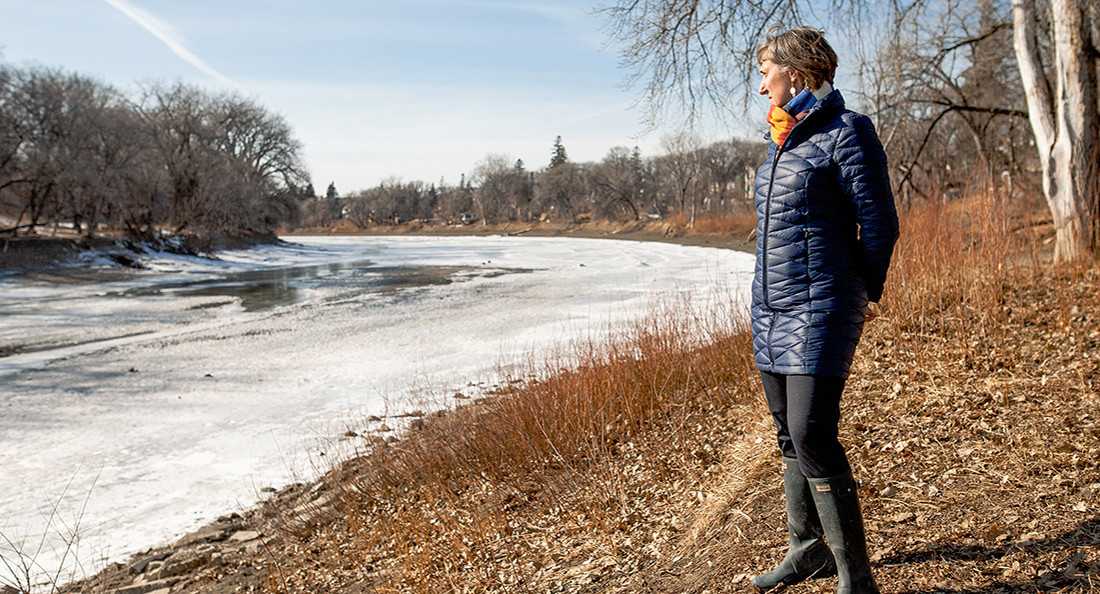Do you know where your sewage goes?
Decades of conversations about wastewater in Winnipeg
In late February, Wolseley residents stepped onto the Assiniboine River’s “winter wonderland” to find untreated wastewater sitting on top of the ice.
Daniel Kanu, director of Lake Winnipeg Indigenous Collective and a Wolseley resident, saw the sewage.
“I’ve always made a point of going to the river throughout the winter, and this year, with COVID and warm weather, there were a lot of people going, a lot of families,” he says.
The overflow that residents saw in February was caused by the city’s combined sewers. Combined sewers collect both land drainage and sewage in the same pipe and are designed to overflow into the river in periods of heavy precipitation or snowmelt in order to prevent basements from flooding. About a third of Winnipeg still has combined sewers, which are mostly located in older areas of the city.
As an advocate for the health of Lake Winnipeg and someone who sits on the advisory board for updates to the North End Water Pollution Control Centre (NEWPCC), Kanu is well-acquainted with the wastewater management system in Winnipeg.
“So, on one of the first melt days, one of the combined overflows happened. This year, the water is so low that it just spilled out over the ice for anyone to see,” he says.
Environmentalists and city planners have been concerned with the amount of untreated and improperly treated wastewater that Winnipeg releases into its rivers for years. But debates about everything from infrastructure development to fiscal responsibility have slowed progress, and, as time goes on, the impacts of nutrients on Lake Winnipeg are becoming more and more apparent.
Lake Winnipeg is the tenth-largest freshwater lake in the world, with a watershed spanning across four Canadian provinces and four US states. Between 1990 and 2000, the phosphorus concentration in Lake Winnipeg doubled, triggering a process called eutrophication, which causes the rapid growth of blue-green algae. Sometimes toxic, these blooms can destroy freshwater ecosystems, detrimentally impacting humans and animals living around freshwater bodies.
Though scientists, politicians and environmentalists haven’t settled the debates on how to reverse this problem, it is clear that reducing the input of nutrients, like phosphorus, to the lake is critical.
Dr. Mark Hanson, head of the Department of Environment and Geography at the University of Manitoba, explains that, in a certain sense, “we have a straightforward set of challenges” ahead of us, which “mainly revolve around (reducing) nutrients – nutrients from wastewater and nutrients from agricultural production.”
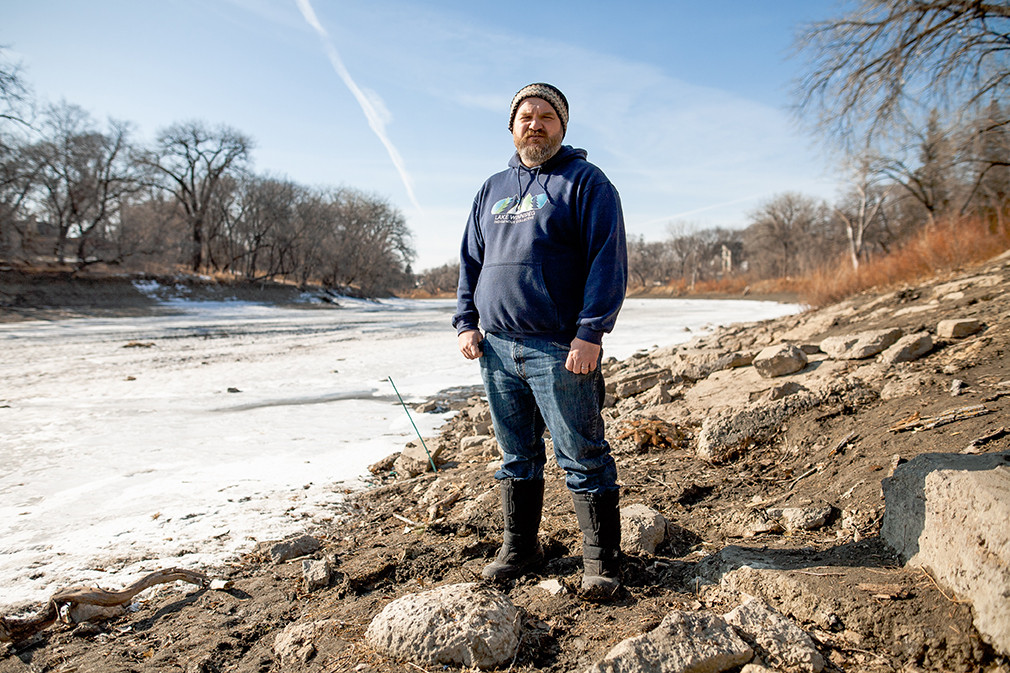
Daniel Kanu, director of the Lake Winnipeg Indigenous Collective
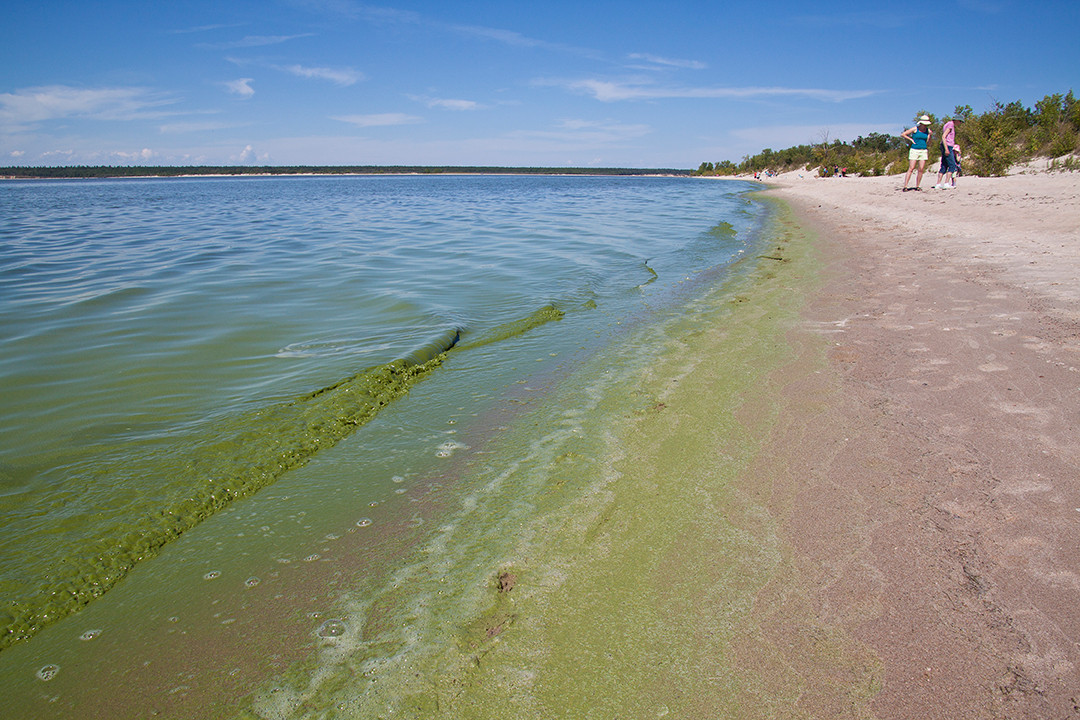
Excessive levels of phosphorous has sped up the growth of toxic blue-green algae in Lake Winnipeg.
Wastewater treatment in Winnipeg
Limiting the amount of untreated and improperly treated wastewater that is released into rivers is a big part of the challenge. Alexis Kanu, executive director of the Lake Winnipeg Foundation (LWF), explains that nine per cent of the total phosphorus input to Lake Winnipeg results from municipal wastewater treatment. Of that nine per cent, five per cent of the total phosphorus in the lake comes from Winnipeg wastewater treatment plants.
The NEWPCC, one of the oldest wastewater treatment centres in Canada, treats about 70 per cent of the wastewater in the city. Michelle Paetkau, acting branch head of wastewater planning and project delivery with the City of Winnipeg, explains that “some of the oldest parts of the plant are still from 1937,” when it was built.
The National Pollutant Release Inventory reports that, among all wastewater treatment plants in Canada, the NEWPCC is the fourth-largest phosphorus polluter.
Daniel Kanu explains that “the water coming out of (the NEWPCC) is largely just screened water.” According to the engineering and construction company Beaudrey, screening is “a filtration process which separates solids from liquids.”
Based on recommendations from the Clean Environment Commission in 2003, Manitoba Conservation issued a license to the City of Winnipeg requiring that they update the NEWPCC in 2009.
Right now, Paetkau says, the City has a three-phase plan to upgrade the whole plant, which includes an upgrade to the power supply and headworks facilities, a new biosolids facility and, finally, new nutrient-removal facilities. Construction on the first phase began in 2018 and is set to be completed in 2025, but timelines for the second and third phases are yet to be determined.
The City is also in the process of planning upgrades to the combined sewer system, which is detailed in a master plan they revealed in 2017. The plan is to capture 85 per cent of diluted sewage flowing into rivers from combined sewer overflows (CSOs) by 2045. However, in order to reach this goal, a tri-level funding agreement will need to be made with the federal and provincial governments.
Paetkau explains that for the CSO project, the City currently does not have provincial or federal funding.
“We’ve been in discussions with the provincial government for sewage-treatment plant upgrades, and that’s where the focus has been,” she explains.
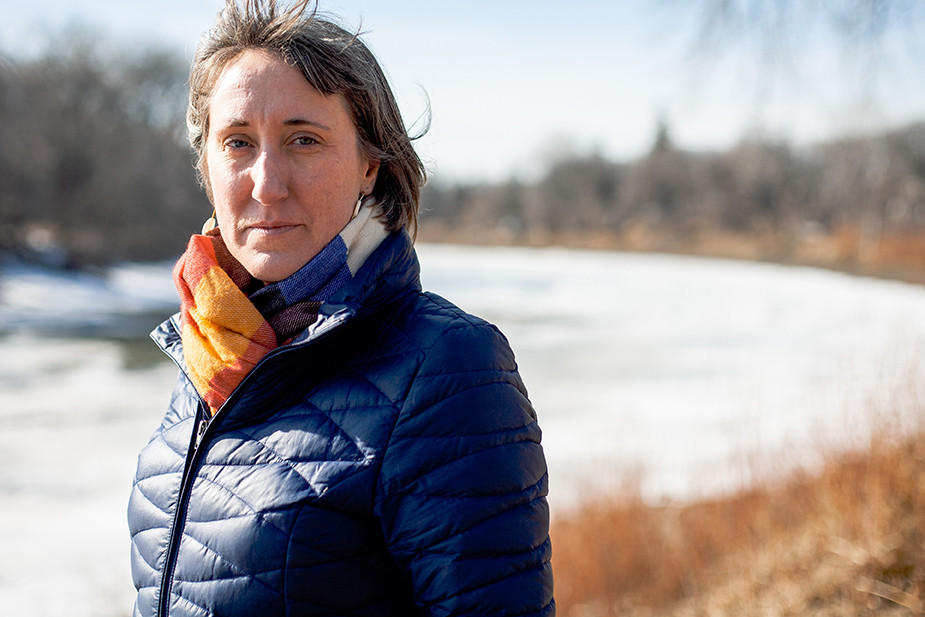
Addressing pollution in Lake Winnipeg is “not a question of either-or. It’s a question of
both-and.” - Alexis Kanu
Deadlines and more deadlines
Environmentalists tend to agree with policy makers that Winnipeg treatment plants should be addressed before combined sewers. Although CSOs are gross to look at, they only contribute 0.26 per cent of the total phosphorus load to Lake Winnipeg, whereas Winnipeg’s treatment plants contribute five per cent.
However, opinions differ in discussions about how long upgrades should take.
Alexis Kanu says the LWF is concerned that the process of upgrading Winnipeg’s treatment plants is taking too long.
“We know that the license was written in the early 2000s, and there have been two deadlines that have been pushed through. The original deadline was in 2014 and then December 2019. Now the most recent plan from the City and the Province says the (NEWPCC) upgrades won’t be completed until 2032,” she says.
“And that’s very concerning for us. It seems to become a pattern not to meet these deadlines.”
The city anticipates that the total NEWPCC upgrade will cost around $1.8 billion.
“This is a lot of money that is being discussed, so with that goes a lot of discussions back and forth,” Paetkau explains “I think it’s taking time, but both (the City and Province) are eager to move this forward as quickly as we can.”
She notes that Manitoba is dealing with some unique environmental challenges, including a flat landscape, heavy clay soils and extreme cold, all of which can complicate land drainage. On top of this, she says, planners have to account for the age and configuration of Winnipeg’s infrastructure.
As the current plans from the City include no firm date for when construction of the nutrient-removal facility will begin, advocates have been pushing for an interim plan to reduce phosphorus discharge from the NEWPCC. This month, the Interim Phosphorus Reduction Plan was passed.
Though Alexis Kanu remains concerned about delayed timelines, as well as how the City will integrate the interim phosphorus-removal facilities with the biosolids facility when it is built, she is hopeful about the positive impacts of citizen engagement.
“Our members at LWF, First Nations from across the lake and concerned citizens ensured that their elected officials knew that they were concerned about this,” she says.
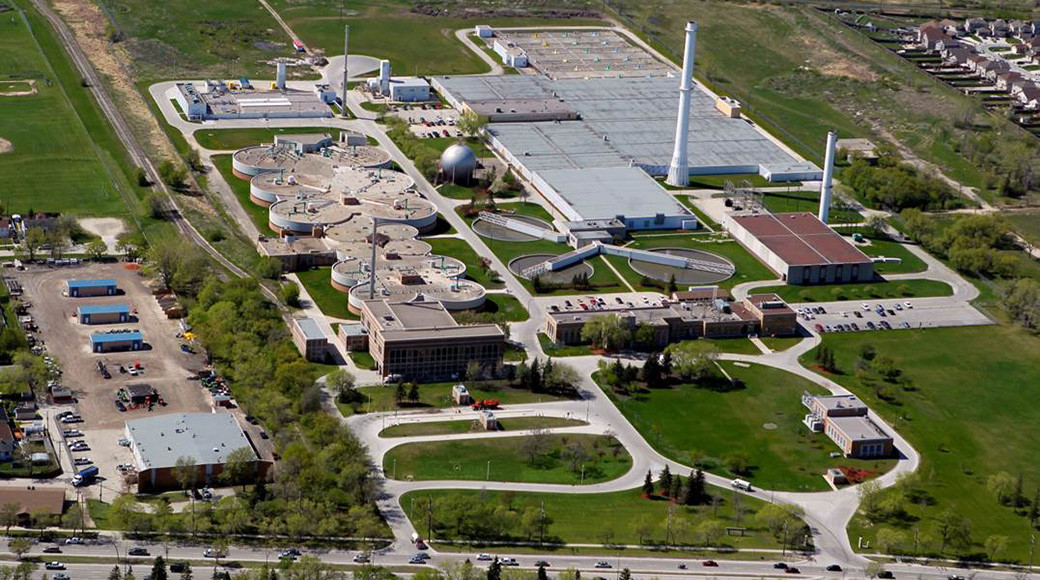
An undated aerial photo of Winnipeg’s North End Sewage Treatment Plant, supplied by the City of Winnipeg. (supplied photo)
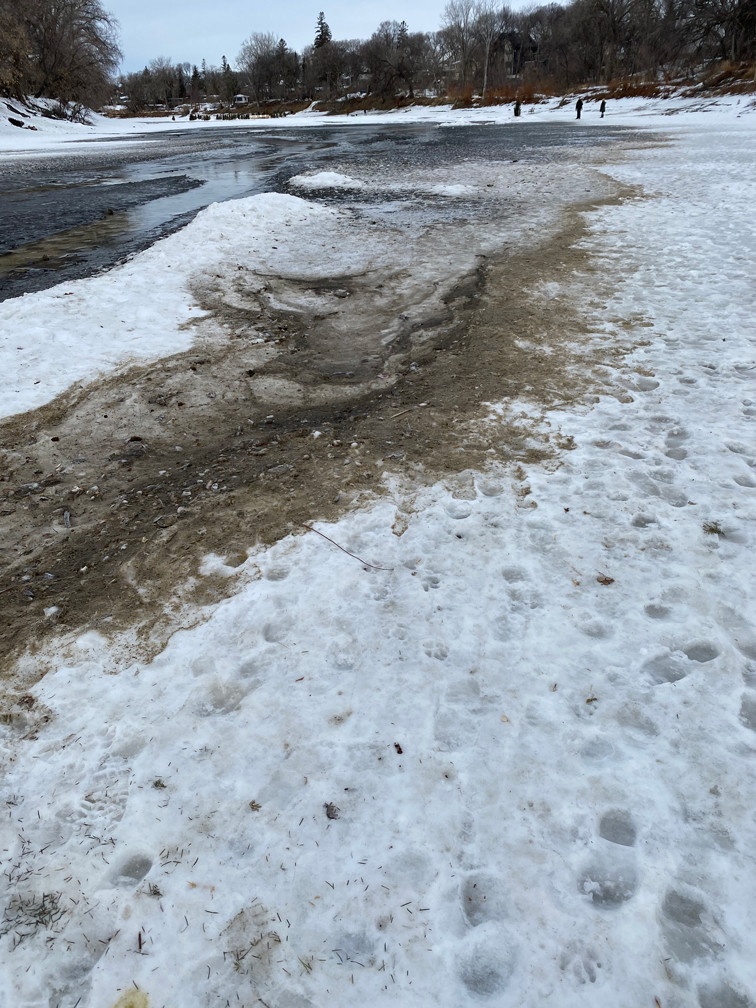
Raw sewage is seen on the frozen Assiniboine River in Wolseley after a drainpipe was overrun by melting snow in late February.
Many stakeholders and many pointed fingers
Policy debate and infrastructure development aside, an important question remains: who should take responsibility for saving the dying lake?
Daniel Kanu recalls that as long as he’s talked with people about Lake Winnipeg, “inevitably most people will point to someone else.”
“If I’m in the city, people will blame the farmers, and if I’m in rural Manitoba, people will talk about the city. Everyone really likes to say it’s someone else’s fault.”
He is concerned that finger-pointing, bureaucracy and a system built on environmental racism has allowed these issues to fester and eventually get out of hand.
“This is something that our elders have been talking about for decades now,” he explains, “and it really only started getting the attention it deserved when the problems began affecting cottagers in the south part of the lake and tourism.”
These issues “really speak to environmental racism,” he adds, “The impacts of these decisions are almost always, at least in Manitoba, pushed onto Indigenous people.”
Alexis Kanu agrees that as long as urban and rural communities spend time debating their respective levels of culpability, nothing will get done.
“It’s not a question of either-or,” she explains, “it’s a question of both-and, so we’re looking both within the perimeter and outside of the perimeter for solutions for the lake.”
The biggest of the tiny numbers
In addition to advocating for faster improvements to municipal wastewater-treatment centres, Alexis Kanu explains that the LWF is “working actively across the rural landscape to identify phosphorus hotspots and test solutions for reducing the phosphorus load.”
“Nutrients, we can definitely do something about,” Hansen confirms, referring to both rural and urban contexts. “We can bring in applied technologies, manage their application and work towards reducing (nutrient) movement into our systems.”
Alexis Kanu points out that locating these hotspots has put the impact of Winnipeg’s wastewater-treatment systems into perspective. “These hotspots are contributing one per cent, 2.29 per cent, 0.26 per cent of the load. That’s multiple farms, smaller towns,” she explains.
“Winnipeg certainly is the biggest of the tiny numbers,” she says. “Five per cent is the largest amount when you break down all these other sources across the landscape. It’s also an amount for which we have proven technical solutions.”
“The way to think about five per cent is that it’s the largest portion of the pie that we know how to deal with pretty effectively,” Daniel Kanu agrees.
“For anyone who lives in Manitoba, they are contributing to the pollution of Lake Winnipeg, and they can put pressure on their local politicians and their neighbours to do their part.”
Published in Volume 75, Number 22 of The Uniter (March 18, 2021)

